L match antenna tuning unit for 80 40 and 20 meters
as biult with found items
Ralph Klimek Sept 2007
The roller inductor was purchased at a hamfest about 10 tens ago and
was mouldering away at the bottom of my junk box. It was originally a
double roller that came from some fixed frequency Collins transmitter
of some sort sort. I cut the double assembly apart and
added some extra hardware to make it a standalone unit. There was no
provision for an external drive shaft so I drilled it and glued a fibre
glass rod to serve as a drive shaft. It was originally designed for
screw driver adjustment only. There were no proper bearings so the
mechanical arrangement exists so as to remove as much mechanical stress
on the bakelite on bakelite journal bearing. The flexible coupler was
required because lacking a lathe, my centering on the drive shaft is
less than concentric.
An excellent source of fiberglass rod material is the inner strength
element from heavy fibre optic cables. This material is also excellent
for use as a contact cleaner or spot polishing tool, indeed the local
electronics shop sells just such a tool which is nothing more than a
short length of this material.
The variable capacitor is one I picked up from a mystery piece of WW2
vintage radio equipment from a hard rubbish collection over thirty
years ago. It has been in assorted projects of mine that came and went
but I suspect that it has found its final home in this equipment.
This ATU is put in a mystery die-cast
box, another castoff. The business with all the copper sheet is
motivated by the cylinderical roller inductor. It wants to induce a
current that would otherwise circulate in a very lossy path, through
the die-cast metal (zinc+rubbish), and through a dubious lid
connection. If the circulating current had a nice low impedance copper
path, that would mean extra precious Watts would make it to the
antenna. The copper sheet was recovered from a dead copper header tank,
otherwise copper sheet is now prohibitively costly.
There is an extra refinement, I did
not want heavy RF circulating currents to go through the shaft wiper
and bearings of the variable capacitor, so the entire capacitor frame
floats and the connection is made by a flexible copper strap directly
to the shaft, so there is no sliding contact. Sliding contacts are
unavoidable in a roller inductor but at least the sliding contacts are
precious metal plated.
The flexible shaft couplers are made from Unobtainium and this project exhausted a lifetime collection stock of them!
A good source of copper sheet could be the long dead dead electric hot
water service in your roofspace. Hobby shops can sell you small copper
sheets, which at the asking price is weight for weight more expensive
than pure Silver!
The bearings for the rotating
elements are made from brass angle stock. In general, I now find
that when building RF projects into aluminuim and especially die-cast
boxes, the ground areas under coax connectors and any elements that
should be grounded to a low impedance RF ground ; should be soldered to
copper flashing. You cannot trust a ground to zinc or pot metal
die-cast material. Notice what is underneath the BNC connectors.
It does make a differance.
homepage

mod record
added email sig Tue Nov 3 17:31:55 EST 2009
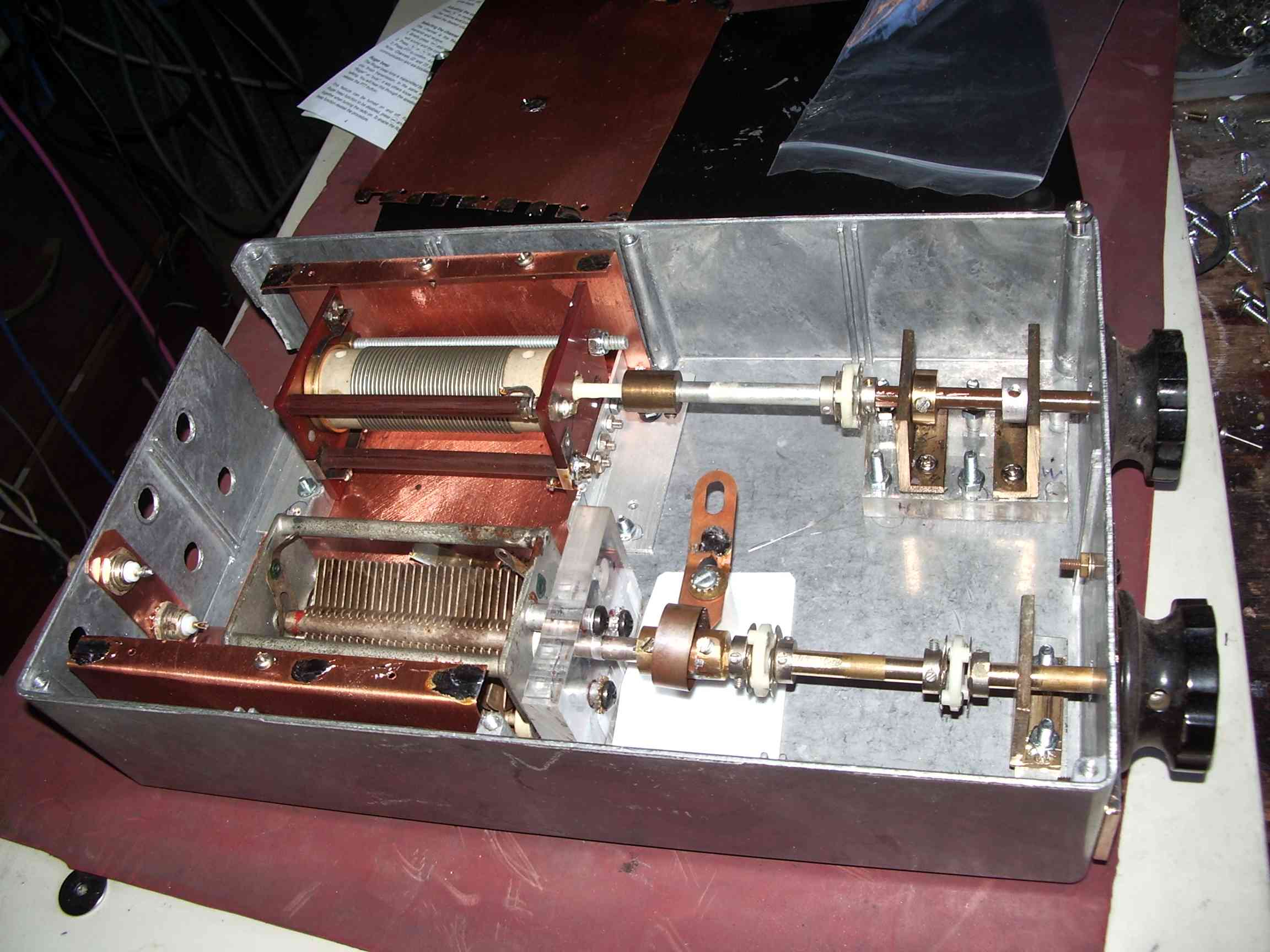
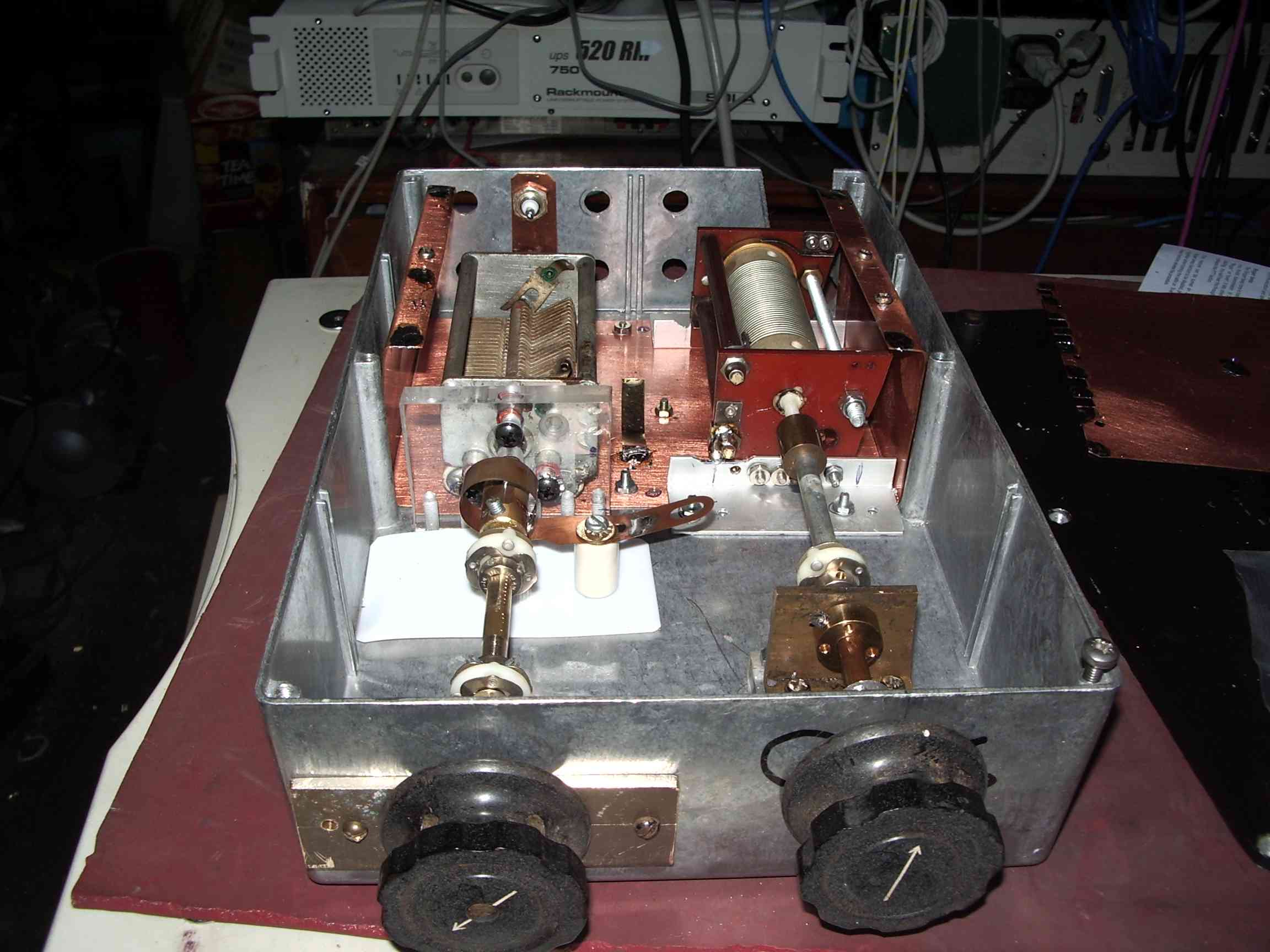
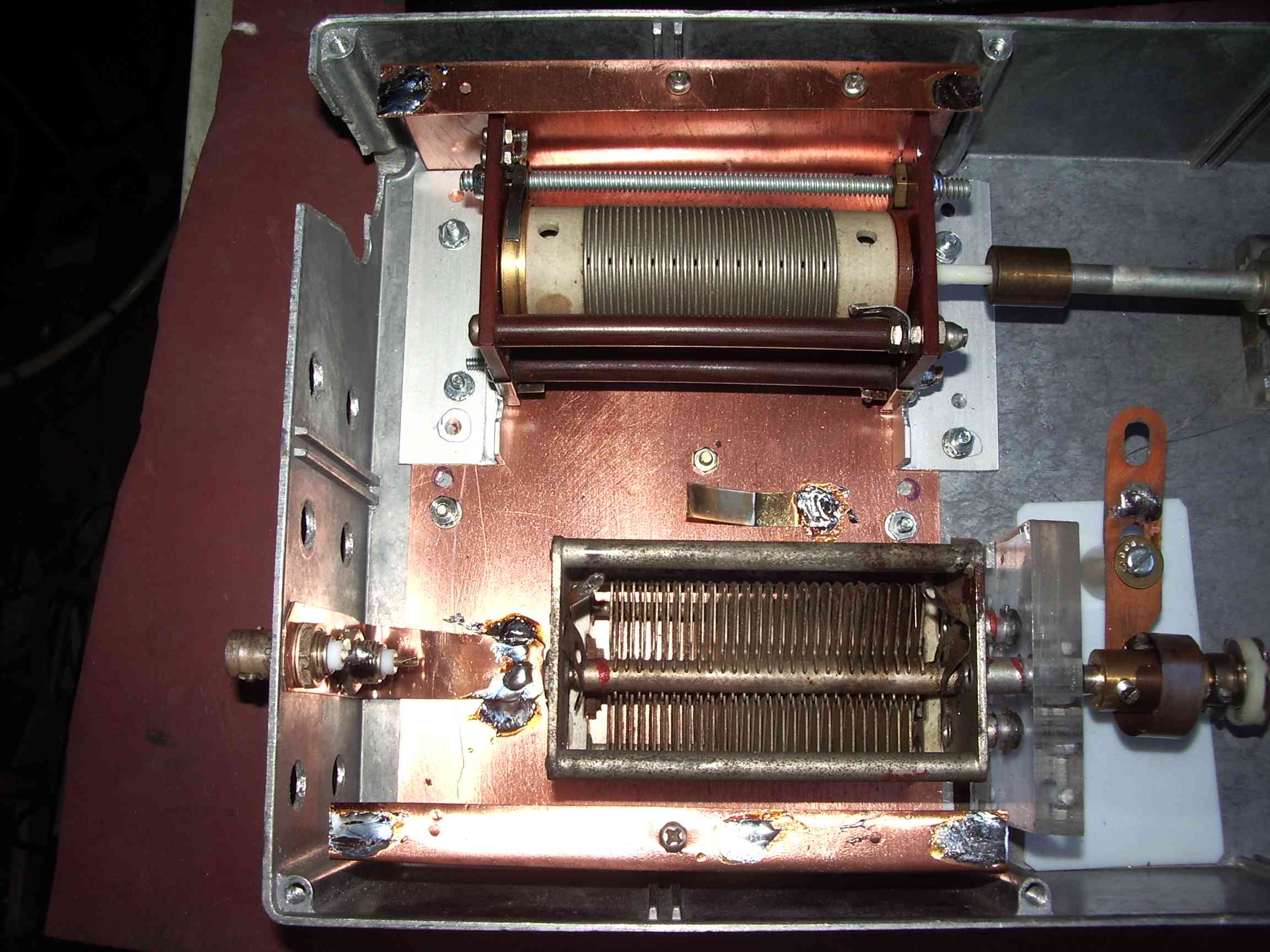 ;
; 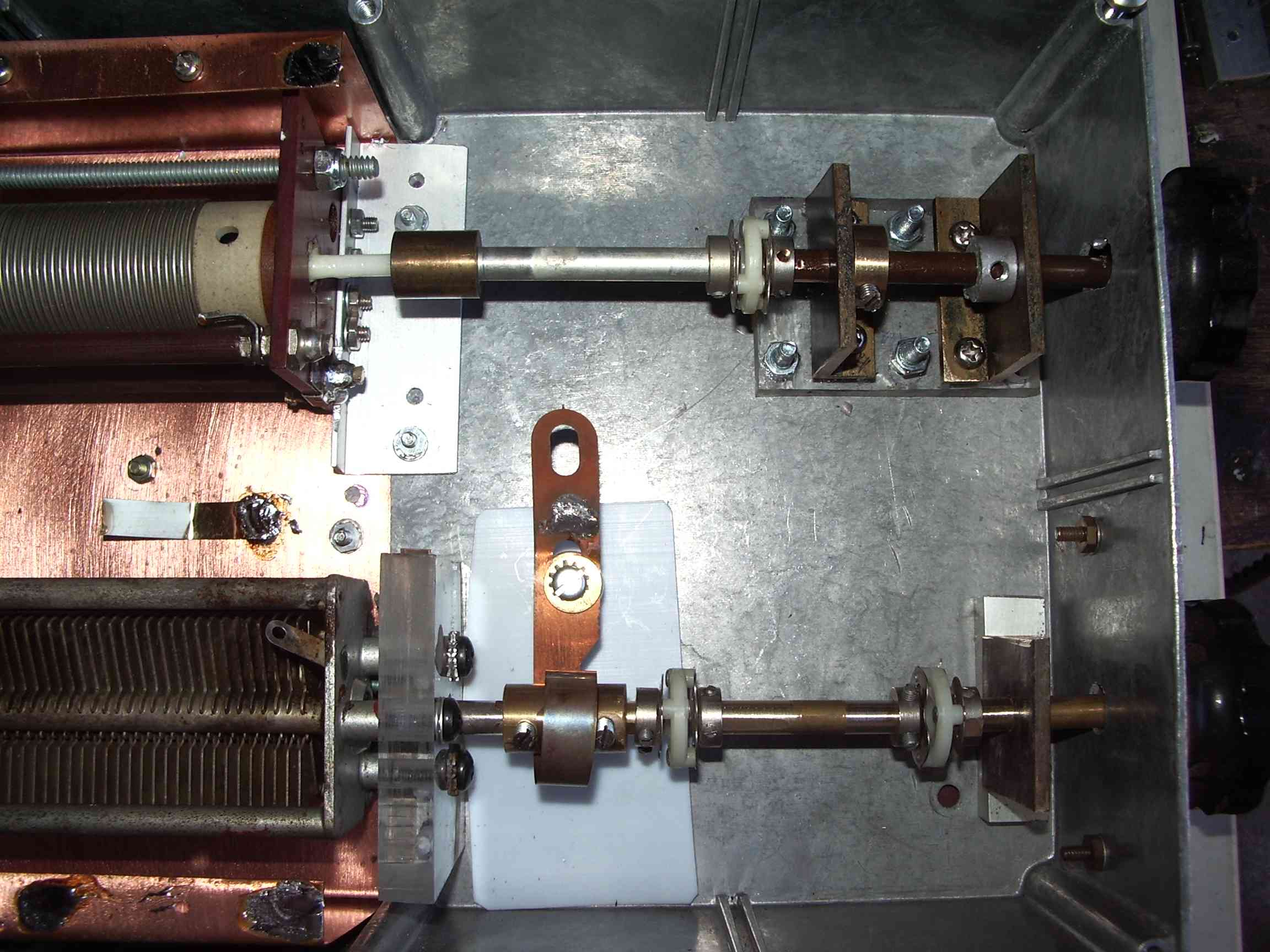 ;
;
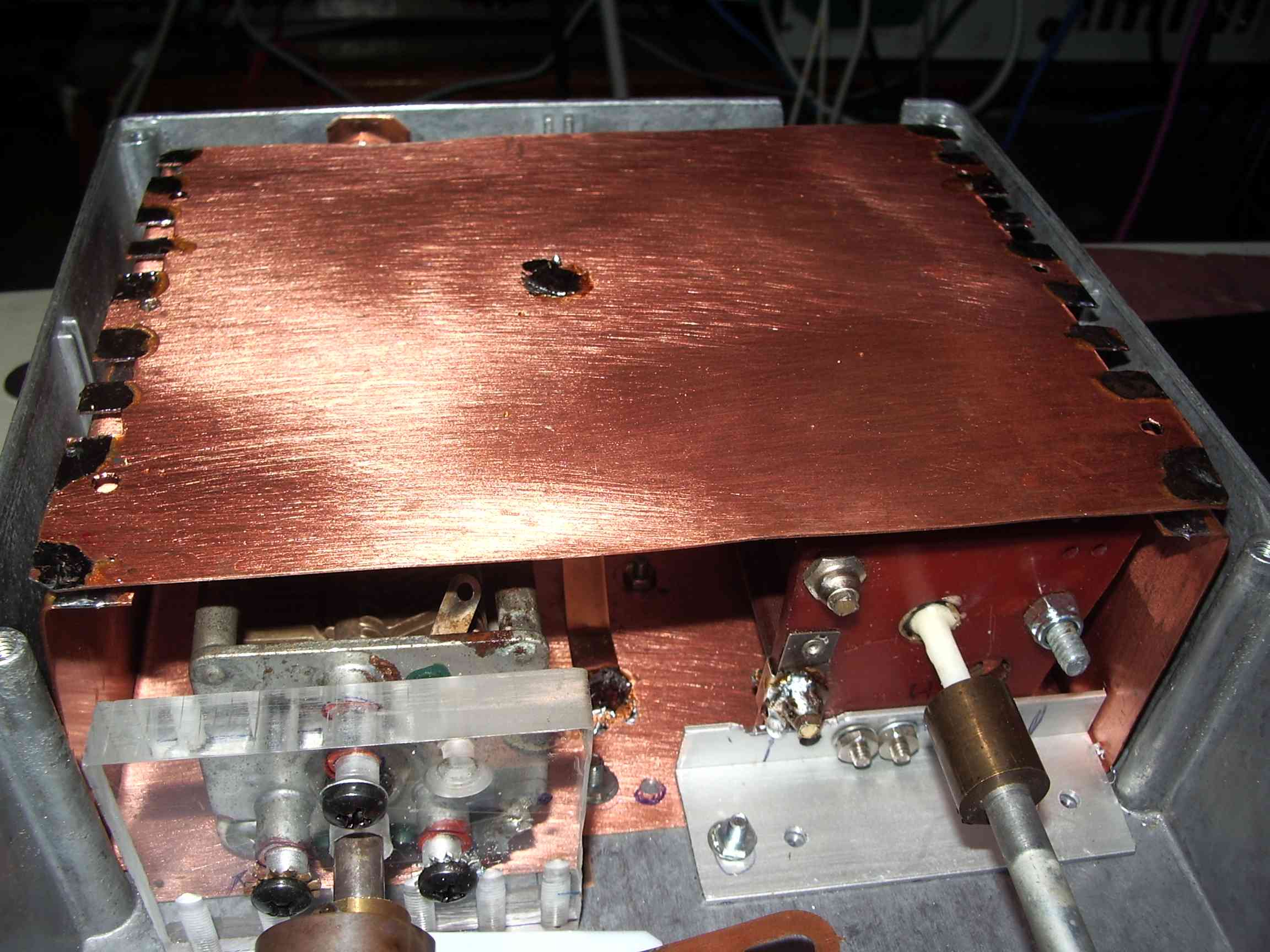 ;
;
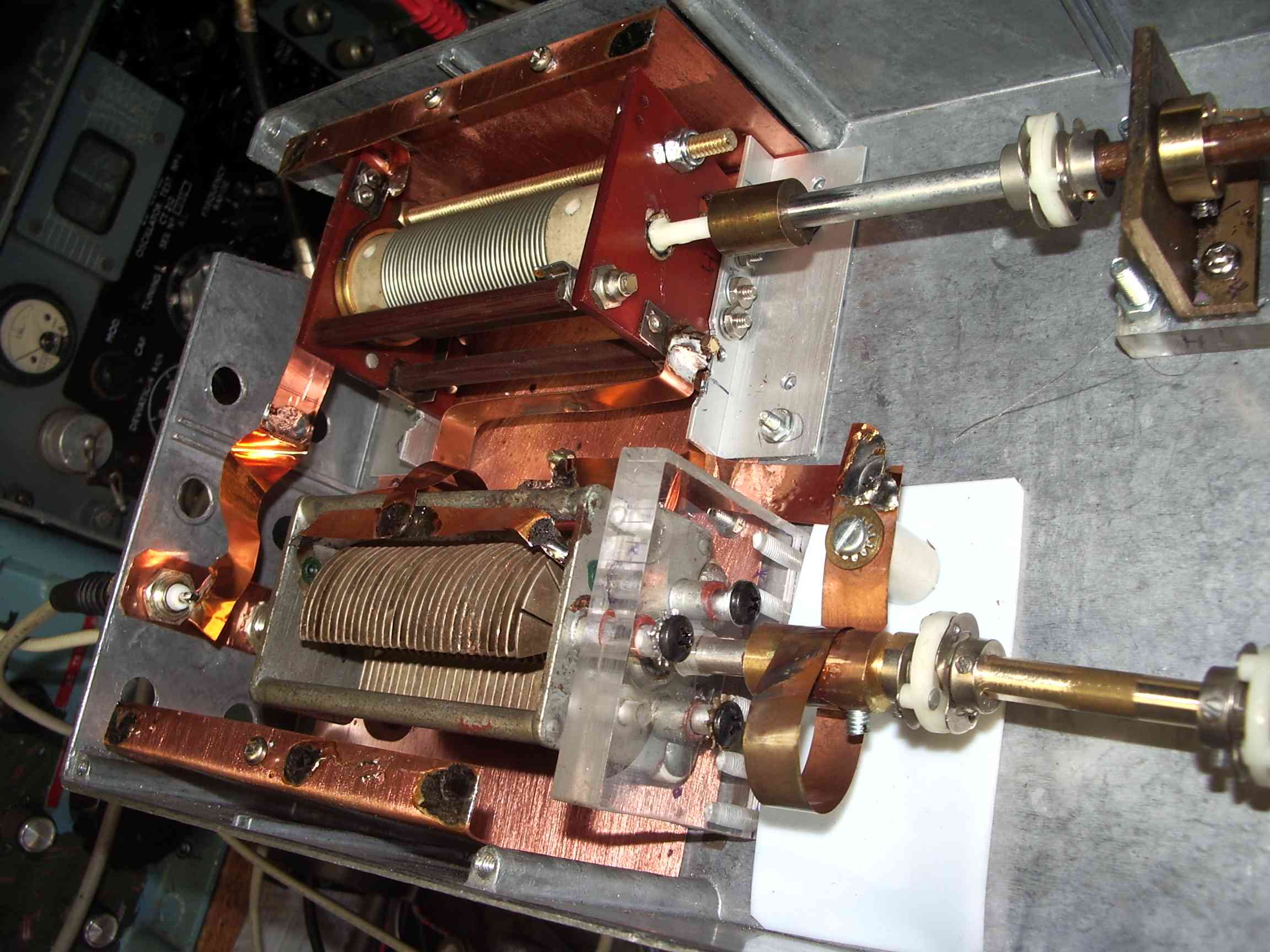 ;
;
 ;
;
 ;
;


 ;
;  ;
;
 ;
;
 ;
;
 ;
;
 ;
;
